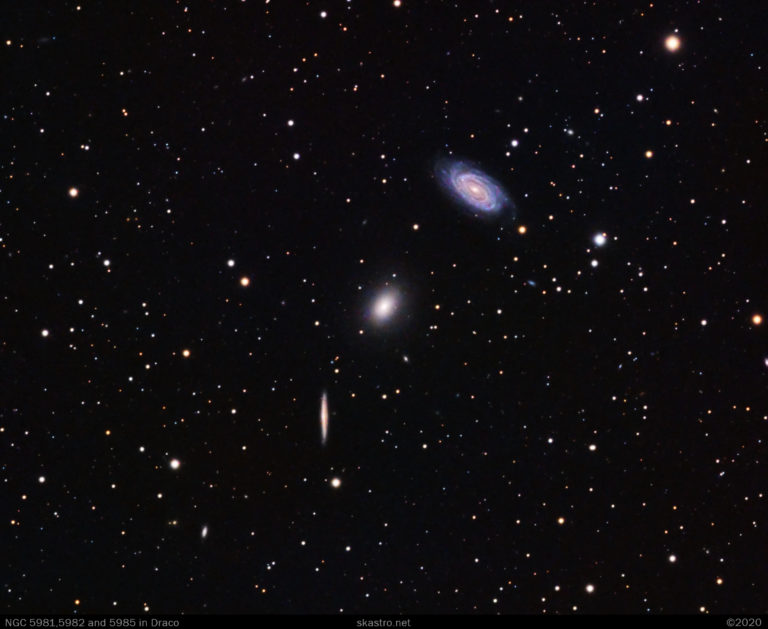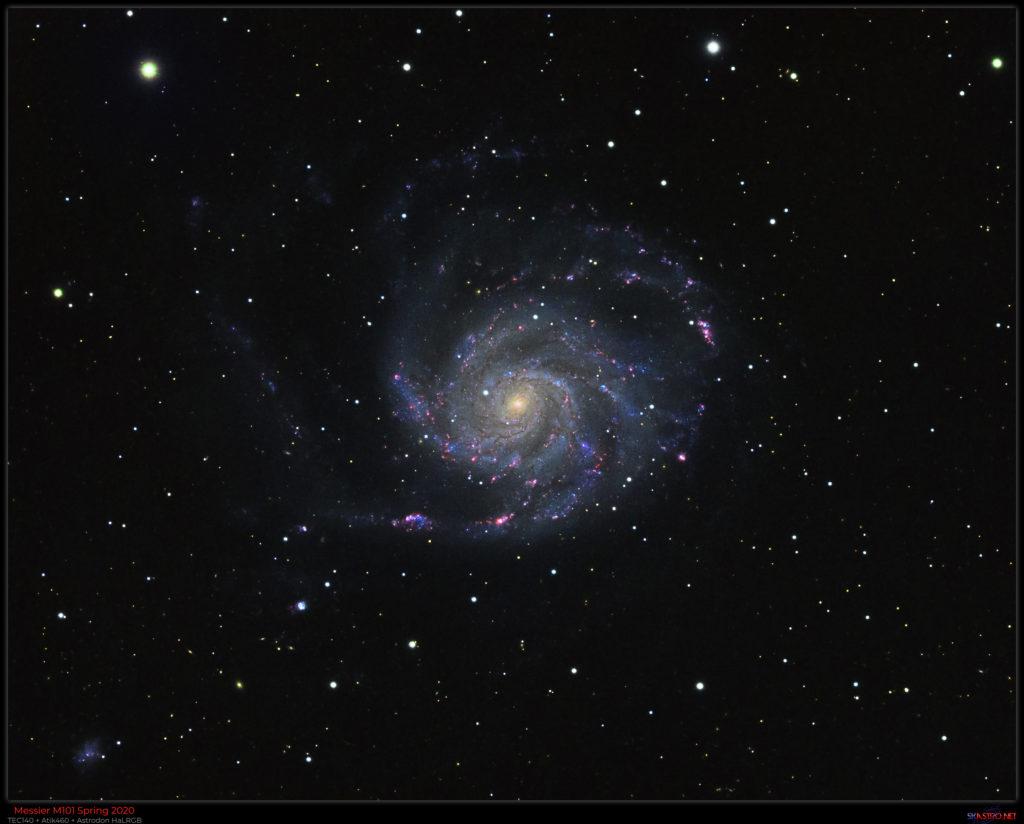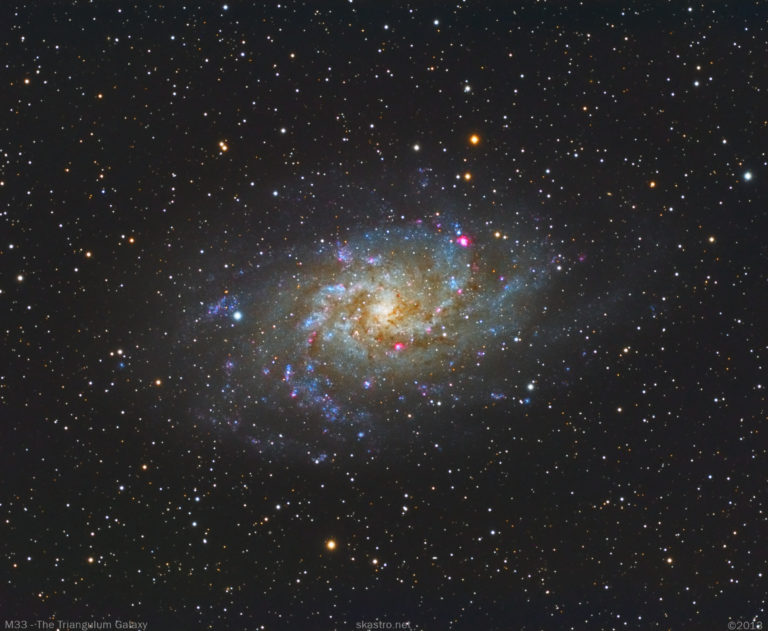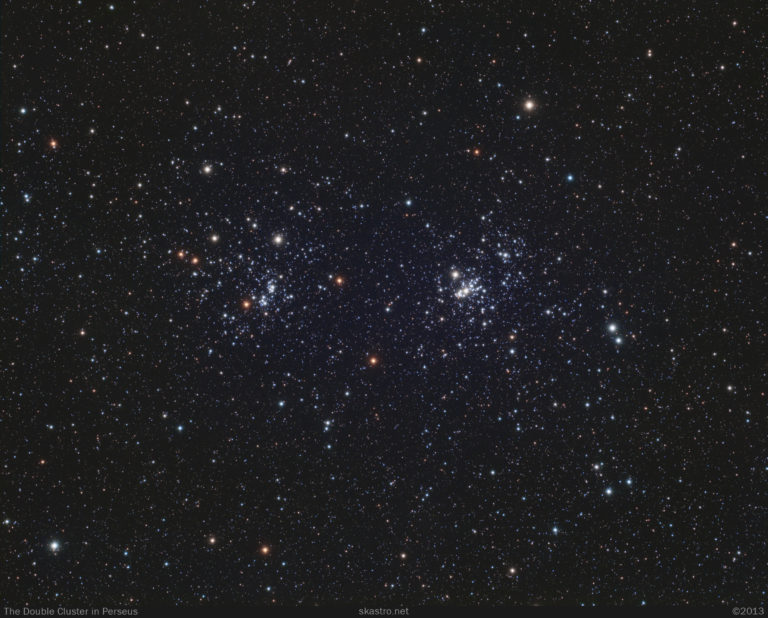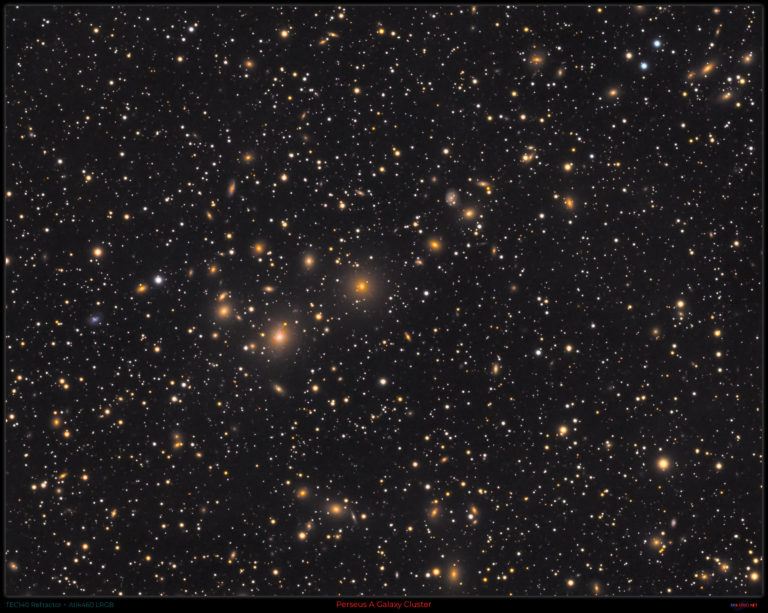The Draco Trio The Draco Trio is a group of three galaxies in the constellation of Draco, The Dragon. They are located about 120-130 million light years away. This image was captured over the winter 2019-2020. I used my TEC140 refractor with Atik 460 CCD and Astrodon LRGB filters. The luminance is four hours of 15 minute exposures binned 1×1 and the RGB one hour in each filter binned 2×2. Mount is MESU200 guided with OAG with a QHY5. Draco Trio Annotated Draco Trio Inverted
M101 completed LRGBHa Image M101 – The Pinwheel Galaxy – is a spectacular, face-on “Grand Design” spiral galaxy located about 20 million light years away. It is quite a hard object to observe visually unless your skies are dark due to the galaxy’s very low surface brightness. In the image below you can see the many red HII (pronounced “H-two”) star forming regions. The galaxy is not a part of the local group of galaxies and is receding away from us with the expansion of the universe. The Spectacular M101 Spiral Galaxy in Ursa Major The image was acquired in my back yard observatory in Nottingham, UK with my TEC140 refractor and Atik 460 CCD camera with LRGBHa Astrodon Filters between 2018 and 2020. I used off-axis guiding to keep the telescope precisely aligned and the whole imaging ensemble was atop my MESU200 mount. M101 is not easily captured from…
M33 – The Triangulum Galaxy This is about two hours each of LRGB (in each filter) with the Takahashi FSQ85 telescope and Atik 460 CCD camera with Baader LRGB filters. I did not use a Ha filter on this image. The data was collected on 29th November 2013 and it was the second light of the telescope (first light being The Double Cluster here). The telescope performs superbly and is very well colour balanced.At a distance of about 2.8 – 3.0 million light years, M33 is the most distant object that can be viewed by the unaided eye and is visible in a dark sky setting as a very tenuous patch of light. Being a face-on galaxy, it has rather low surface brightness and it lacks a bright central core making it quite hard for beginners to find as they expect to see something much brighter and more colourful. The…
The Double Cluster in Perseus The Double Cluster is located in the constellation of Perseus, near the border with Cassiopeia and is composed of the two Open Clusters NGC869 and NGC 884. They are visible faintly to the naked eye on a dark night and a wide field eye piece shows them superbly in the telescope as does a pair of binoculars if you hold them steady. The clusters are very distant from us at about 7500 light years and are located outwards in the Perseus spiral arm of the galaxy. Were they as close as The Pleiades (at 450 light years) they would dominate the night sky! The above image was taken with my Takahashi FSQ85 refractor and Atik 460 CCD camera with Baader RGB filters and contains 45 minutes of exposures in each of the RGB channels. I took these exposures in 2013 and this was the first…
The Perseus Galaxy Cluster (Abell 426) is one of the most massive known objects in The Universe. It is a supercluster of galaxies with thousands of individual members located between 230-280 million light years away. The galaxies are located within a vast cloud of enveloping gas, the gas being much more massive than the total mass of the galaxies themselves. This area is very important for physicists testing the theory of relativity. It is clear from the red patches on the main Perseus galaxy itself (NGC 1275) slightly to left and bottom of this images centre (at the eight o’clock position) that something dramatic is happening inside this galaxy. Perseus A Technical Information Imaged from my backyard observatory in Nottingham, UK with my TEC 140 refractor and Atik 460 CCD camera with Astrodon LRGB filters between October 2019 to January 2020. The image was created from 20 x 900s luminance exposures…

